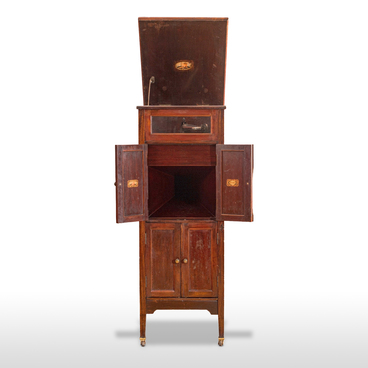The icon of Our Lady of Częstochowa from the museum collection was presumably located in the main church of Taganrog, the Dormition Cathedral, until it was closed and demolished during the Soviet period. It is a copy of the miracle-working icon, the most popular shrine in Poland and one of the most venerated shrines in Central and Eastern Europe.
The original image is housed by the Jasna Góra Monastery in Częstochowa, Poland, which is how the icon got its name. Because of the dark skin of the Virgin Mary and Jesus, it also became known as the “Black Madonna.”
In 1813, during the Napoleonic Wars, the Russian army captured the Częstochowa fortress. As a sign of peace, the abbot of the monastery presented a copy of the icon to the Russian military commanders. Mikhail Illarionovich Kutuzov brought it to St. Petersburg along with the keys to the captured fortress.
In the capital of the Russian Empire, the icon was covered with an expensive gilded riza and placed in the Kazan Cathedral. Later, copies of the icon “Our Lady of Częstochowa” became widespread throughout the country. In Russia, this icon came to symbolize military glory and was referred to as the “Invincible Victory.”
This icon holds significance for both Catholics and Orthodox Christians. The names of five Russian emperors are associated with the miracle-working image of “Our Lady of Częstochowa.” Emperor Peter the Great visited the monastery in Częstochowa and prayed before the icon of the Virgin Mary. He also married Yekaterina Alexeyevna (born Marta Helena Skowrońska, later known as Catherine I of Russia) on March 6, 1711, which coincided with the feast of Our Lady of Częstochowa.
Emperor Alexander I visited the monastery in 1813. From that year, the Russian Orthodox Church established a celebration in honor of the icon. Three decades later, in 1845, Nicholas I ordered to demolish the Częstochowa fortress and create a park in its place using his donation. On April 17, 1889, a monument to Alexander II was erected in the center of the park, opposite the monastery church, using donations from the Polish. In 1870–1872, an Orthodox church was built in Częstochowa to commemorate the fact that Emperor Alexander III was not injured during the assassination attempt by the Polish citizen Antoni Berezowski in Paris.


